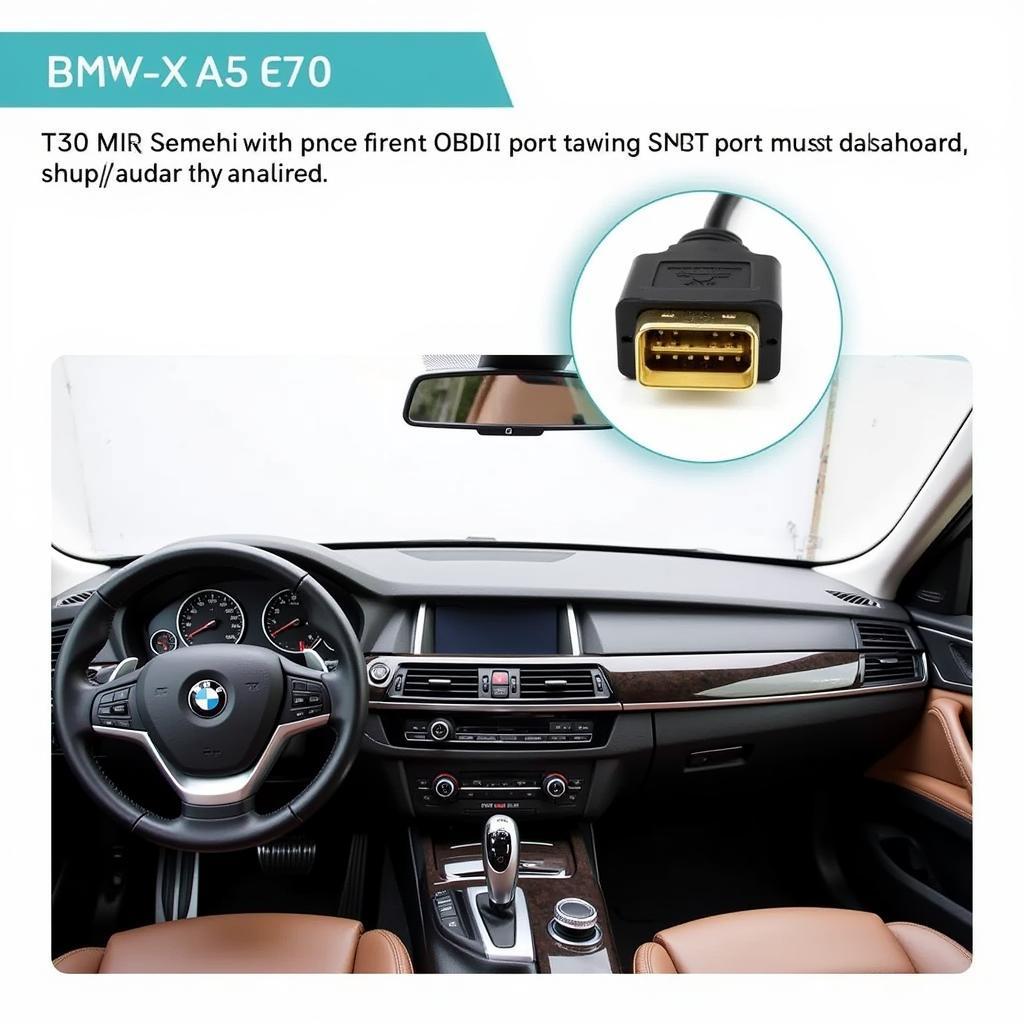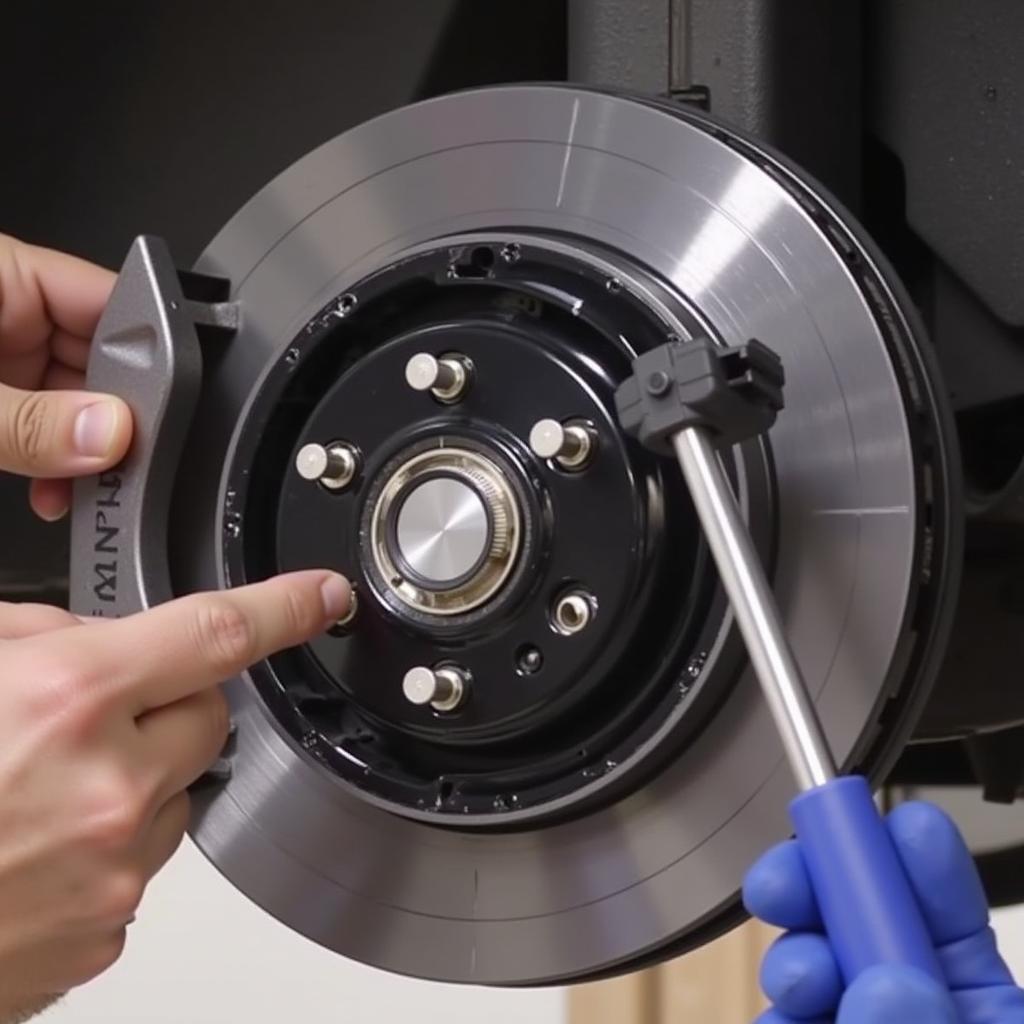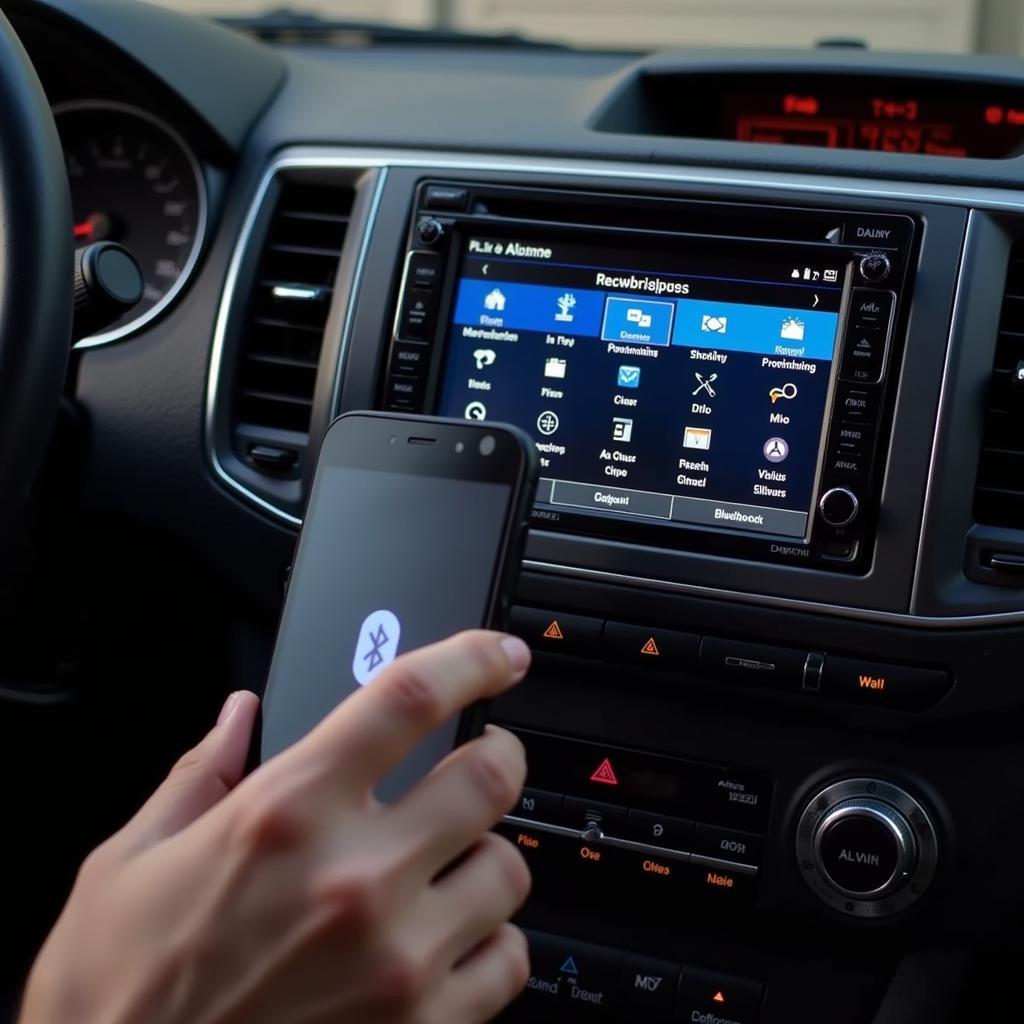Seeing the brake pad warning light illuminated on your BMW X5 E70’s dashboard can be an unwelcome sight. While it can induce a moment of panic, it’s usually a straightforward fix. This guide will walk you through the common causes and solutions, providing you with the knowledge to tackle this issue head-on.
Understanding Your BMW X5 E70 Brake Pad Sensor
Your BMW X5 E70 is equipped with a sophisticated electronic system that constantly monitors the condition of your brake pads. At the heart of this system lies a sensor, a small device embedded within the brake pad itself. This sensor acts as a vigilant guardian, alerting you when the brake pad material wears down to a critical level, typically signaling it’s time for a replacement.
Common Causes of the Brake Pad Warning Light
While worn brake pads are the most common culprit behind the illuminated warning light, there are a few other possibilities:
- Worn Brake Pad Sensor: The sensor itself may be faulty or damaged, triggering the warning light prematurely.
- Damaged Wiring: The wiring connecting the sensor to the vehicle’s electrical system could be compromised, disrupting the signal.
- Reset Issue: Sometimes, even after replacing the brake pads, the warning light might stay on due to a system glitch requiring a manual reset.
Step-by-Step Guide to Resetting the Brake Pad Warning Light
In many cases, simply replacing your brake pads will be enough to extinguish the warning light. However, if the light persists, you can try a manual reset:
- Safety First: Ensure your vehicle is parked on a level surface and the engine is off. Engage the parking brake for added safety.
- Locate the OBD-II Port: This port is typically found under the dashboard on the driver’s side.
- Connect an OBD-II Scanner: These handy devices are widely available at auto parts stores. Plug the scanner into the OBD-II port.
- Turn on the Ignition: Turn your key to the “on” position, but don’t start the engine.
- Access the Brake System Menu: Using the scanner’s interface, navigate to the brake system menu.
- Select “Reset Service Light” or “Reset Brake Pad Warning”: The exact wording may vary depending on the scanner model.
- Follow On-Screen Prompts: The scanner will guide you through the reset process.
- Confirm Reset: Once the process is complete, confirm the reset and disconnect the scanner.
 BMW X5 E70 OBD-II Port Location
BMW X5 E70 OBD-II Port Location
When to Seek Professional Help
While resetting the brake pad warning light can often be done DIY-style, certain situations call for expert intervention. If you encounter any of the following, don’t hesitate to consult a qualified mechanic:
- Persistent Warning Light: If the light remains on after replacing the pads and attempting a reset, there might be a deeper electrical issue.
- Visible Damage: If you notice any physical damage to the brake system components, including the sensors or wiring, it’s crucial to seek professional repair.
- Unusual Brake Pedal Feel: If your brake pedal feels spongy, excessively hard, or vibrates, it indicates a potential problem that requires immediate attention.
 BMW X5 E70 Brake Pad Sensor Replacement
BMW X5 E70 Brake Pad Sensor Replacement
Tips for Maintaining Your BMW X5 E70’s Brakes
Proactive maintenance can help you avoid unexpected brake issues and ensure optimal performance:
- Regular Inspections: Schedule routine brake inspections, especially if you frequently drive in demanding conditions like stop-and-go traffic or hilly terrain.
- Quality Parts: When it’s time for replacements, always opt for high-quality brake pads and sensors specifically designed for your BMW X5 E70.
- Early Attention to Signs: Don’t ignore unusual noises like squealing or grinding coming from your brakes, as these are often early indicators of a problem.
Conclusion
Addressing the brake pad warning light on your BMW X5 E70 is crucial for your safety and the longevity of your vehicle. By understanding the role of the brake pad sensor, recognizing the common causes of the warning light, and following the steps outlined in this guide, you can confidently tackle this issue. Remember, if you encounter any complex problems or are unsure about any step, seeking help from a qualified mechanic is always recommended.


